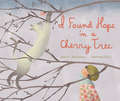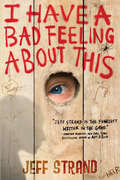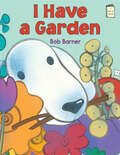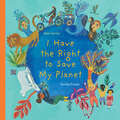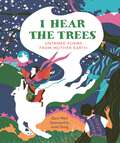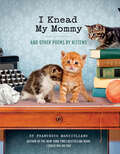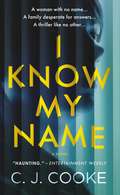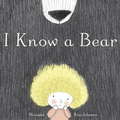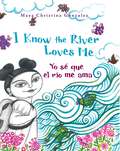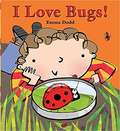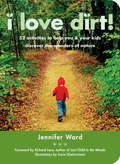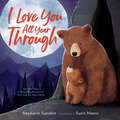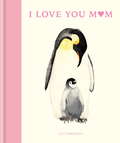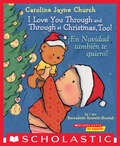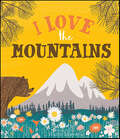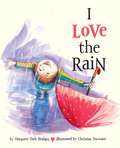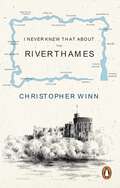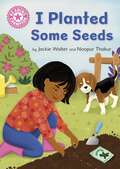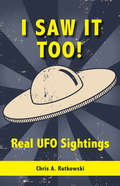- Table View
- List View
I Don't Really Love You: And Other Gentle Reminders of Existential Dread in Your Everyday Life
by Alex BeyerGo from aww to awful! with I Don't Really Love You, a darkly humorous collection of adorable pet photography and soul-crushing one-liners, based on the popular Instagram @365DaysofDread. Drawing on the black humor of author Alex Beyer, I Don't Really Love You takes readers on a journey from delightful to depressing (and back again!). Dead pan captions, from "Birthdays don't matter" to "Inadequacy haunts me endlessly," peek out from behind the forms of calm cats and happy-go-lucky puppies, creating an unexpected contrast and offbeat appeal. Pet lovers and humor lovers will be captivated in equal measure, with more than 75 full-color photographs of cats and dogs in a range of breeds, alongside an off-beat, subversive voice. With the perfect attitude for our rapidly changing world, this quirky book will make readers laugh out loud (after sending them crawling under the covers to contemplate their existence).
I Found Hope in a Cherry Tree
by Jean E. PendziwolJean E. Pendziwol’s newest picture book is a lyrical meditation on nature and hope. The child in this story observes the sun by playing with her shadow, though sometimes it disappears. She listens to the wind tell stories, even when it howls like wolves. She tastes snowflakes — sometimes sweet and delicate; other times sharp on her cheeks. And finally, she finds hope in the buds on a cherry tree that survive through the winter to blossom in spring. Jean E. Pendziwol has written a layered, lyrical exploration of the hardships and beauties of nature. Her poem, beautifully illustrated by Nathalie Dion, is a study in contrasts and a message of the hope that carries us through the year and through our lives. Correlates to the Common Core State Standards in English Language Arts: CCSS.ELA-LITERACY.RL.1.2 Retell stories, including key details, and demonstrate understanding of their central message or lesson. CCSS.ELA-LITERACY.RL.1.4 Identify words and phrases in stories or poems that suggest feelings or appeal to the senses.
I Haiku You
by Betsy E. SnyderThis giftable little picture book of haiku by award winner Betsy Snyder is something adults will love to give one another as much as they'll enjoy sharing it with the youngest listeners. Perfect for Valentine's Day and any day of the year, this book will inspire people to tell one another, "I haiku you!"
I Hate Camping
by P. J. Petersen[From the dust jacket:] "Dan's mom didn't even ask him if he wanted to go camping with her boyfriend Mike and his two kids. Now he's stuck at muddy, freezing Baker Lake. The tent keeps falling down, the canoe tips over, and worst of all, Mike's kids are driving Dan crazy! Will they make it home in one piece?" This is a funny chapter book for young readers about kids who are forced to be together learning to get along with teasing, pranks, problems and surprises. The chapters are short.
I Have a Bad Feeling About This
by Jeff StrandThe perfect blend of horror and humor, I Have a Bad Feeling About This is a laugh-out-loud wilderness comedy about an ultimate survival camp that takes a deadly turn...Wilderness Survival Tip #1Drinking your own sweat will not save your life. Somebody might have told you that, but they were trying to find out if you'd really do it.Wilderness Survival Tip #2In case of an avalanche, don't despair. You're doomed, but that's a wicked cool death.Wilderness Survival Tip #3If you're relying on this book for actual survival tips, you're dead already.Henry Lambert would rather play video games than spend time in the great outdoors—but that doesn't make him a wuss. Skinny nerd? Fine. But wuss is a little harsh. Sadly, his dad doesn't agree. Which is why Henry is being shipped off to Strongwoods Survival Camp.Strongwoods isn't exactly as advertised. It looks like the victim of a zombie apocalypse, the "camp director" is a psycho drill sergeant, and Henry's sure he saw a sign written in blood...Perfect for those looking for:Survival books for adults as well as young adultsHilarious comedy books for boysTeen books for boys ages 13-16Also by Jeff Strand:A Bad Day for Voo DooThe Greatest Zombie Movie EverHow You Ruined My LifeStranger Things Have Happened
I Have a Garden (I Like to Read)
by Bob Barner"I have a garden," a frisky dog announces. In simple sentences, the dog guides new readers through a bright and lush garden, which is home to a chipmunk, a bird, a bug, and all sorts of other creatures. "This garden is for me," the dog continues. "No. This garden is for all of us. We have a garden," answer his animal neighbors. Illustrated in vibrant collage, this deceptively simple I like to Read® book is a celebration of nature and community, plus readers can play spot the dog on nearly every spread. Guided Reading Level B.
I Have the Right to Save My Planet (I Have the Right #2)
by Alain SerresFrom the author and illustrator duo who created the award-winning I Have the Right to Be a Child comes this beautifully illustrated picture book about a child’s right to advocate for the environment they live in. All children have the right to learn about the world, to celebrate the water, air and sunshine, and to be curious about the animals and plants that live on our planet. All children also have the right to learn about endangered species, to be concerned about plastic in the ocean, and to understand what a changing climate means for our Earth. Scientists tell us that every living thing is connected. When we cut down forests, we destroy animal habitats. When we throw plastic in the garbage, it never really goes away. When we spray pesticides on our fruit and vegetables, we poison the earth, animals and ourselves. What can children do to help? All children can draw posters of endangered animals to raise awareness. All children can send a letter to the leader of their country, signed by every member of their family. All children can protest along with their parents. Children have the right to do all these things as proclaimed in the United Nations Convention on the Rights of the Child. All children have the right to try to help our Earth, in whatever ways they can. Told from the perspective of a child, this colorful and vibrant book explores what it means to be a child who dreams of a beautiful future for their planet. Correlates to the Common Core State Standards in English Language Arts: CCSS.ELA-LITERACY.RI.2.6 Identify the main purpose of a text, including what the author wants to answer, explain, or describe.
I Hear The Trees
by Zaro WeilJourney into the wild world of Mother Earth in this enchanting poetry collection, beautifully illustrated by Junli Song. Sigh as a mother wolf teaches her cub how to howl. Laugh with bamboozled berries and a ruby-wonderful beet. Feel the thrill of Tyranno's terrifying tale and play with ten on-the-run haiku mice.Your imagination will soar as a hullabaloo of creatures and plants, moon, sun and stars make their way word by word and picture by fantastical picture into your heart.
I Knead My Mommy: And Other Poems by Kittens
by Francesco MarciulianoA purrfect collection of poetry that explores kitten life from the New York Times–bestselling author of I Could Pee on This and I Could Chew on This. Just when we all thought things couldn&’t get any cuter comes a book of confessional poems about the triumphs, trials, and daily discoveries of being a kitten. From climbing walls to claiming hearts, these little cats bare all in such instant classics as &“And Then You Said &‘No,&’&” &“Ode to a Lizard I Didn&’t Know Is Also a Pet in This House,&” and &“I Will Save You.&” With adorable photos of the poetic prodigies throughout, this volume gives readers a glimpse into their confused and curious feline minds as they encounter the world around them.
I Know My Name
by C. J. CookeA woman with no name. A wild, abandoned island. A family desperate for answers. A debut thriller like no other.I KNOW MY NAMEOn a small Greek island, a woman comes ashore with no memory of who she is, where she's from, or how she came to be shipwrecked there. Worse, she has no way of leaving. As she's nursed back to health by the island's only inhabitants, four friends on an annual retreat, she detects tensions between the group that suggest not all is quite as it seems. Her new acquaintances each appear to be hiding something--something that may relate to the mystery of her identity.Meanwhile, in a pretty suburb on the outskirts of London, Eloise, the mother of a newborn and a toddler, vanishes into thin air. Her husband, Lochlan, is desperate to find her--but as the police look into the disappearance, it becomes clear that Lochlan and Eloise's marriage was not the perfect union it appeared.As Lochlan races to discover his wife's whereabouts, Eloise enacts an investigation of her own. What both discover will place lives at risk and upend everything they thought they knew about their marriage, their past, and what lies in store for the future.
I Know a Bear
by Mariana Ruiz JohnsonIn this touching, hopeful story that reads like a modern classic, a young girl befriends a bear in the zoo. He comes from far, far away, a place he calls the Land of the Bears, where the food is sweet and the land is vast. It is a wondrous home, where the rivers are like bathtubs and naps last for months and months. But, alas, he cannot return; his new home is the zoo. And so the girl listens carefully as her friend remembers, and she imagines a world of freedom, vast and sweet. Using a gentle tone, spare language, and gorgeous illustrations, Mariana Ruiz Johnson reminds young readers that being a good listener is what makes for a good friend.
I Know the River Loves Me / Yo sé que el río me ama: Yo Sé Que El Río Me Ama
by Maya GonzalezBilingual English/Spanish. Listen... Can you hear the river calling you? Rushing and bubbling, splashing or still, the river has so much to teach us.Whenever Maya visits the river, the river jumps up to greet her. It cools her down when the summer sun is too hot, and holds her up when she dives in. It keeps her company in the quiet of winter. The river takes care of Maya and Maya takes care of the river. In this gentle story of love and respect for nature, Maya Christina Gonzalez combines her award-winning talents as an artist and storyteller. Young readers will be inspired by the joy and wonder of being outdoors, and learn powerful lessons about their environment and themselves.
I Love Bugs!
by Emma DoddCome on a creepy-crawly bug safari through one little boy's garden . . . with a brilliant surprise at the end. Perfect for bug-lovers and budding scientists everywhere! With fun rhyming text and bright, bold artwork, perfect for sharing and reading aloud.
I Love Dirt!: 52 Activities to Help You and Your Kids Discover the Wonders of Nature
by Richard Louv Jennifer Ward Susie GhahremaniI Love Dirt! presents 52 open-ended activities to help you engage your child in the outdoors. No matter what your location--from a small patch of green in the city to the wide-open meadows of the country--each activity is meant to promote exploration, stimulate imagination, and heighten a child's sense of wonder.To learn more about the author, Jennifer Ward, visit her website at jenniferwardbooks.com and to learn more about the illustrator, Susie Ghahremani, visit her website at boygirlparty.com.
I Love You All Year Through
by Stephanie StansbieA celebration of the love for a child through every season, with delightful artwork by the #1 New York Times bestselling illustrator of Hoda Kotb's I've Loved You Since Forever.Poetic verse perfectly expresses the unconditional love shared between grown-ups and their precious little ones. Togetherness is always special, whether you are enjoying springtime showers, lazy summer days, or the cozy chill of autumn and winter. The touching message will resonate with parents, grandparents, and anyone who has a little one in their life. A must-have for new parents...and every family's storytime bookshelf!
I Love You Best Little Moose: A fictional children's book comparing a parent's limitless love to the beauty and majesty of Alaska
by Sanger RachaelGet swept away to the north with this emotional children's book as Little Moose opens his eyes for the first time to discover the world around him through the majesty of Alaska's unique animals, places, and scenes. Through the height of mountains, through the beauty of sunrises, and the brightness of stars, your child will gain a better understanding of the amount of a parent's love. Follow Little Moose page by page as he tries to guess what his parent loves more than all the beauty that Alaska offers. You and your child will find this story charming and endearing with it's colorful illustrations that truly expresses the limitless love a parent feels for their child. I Love you Best Little Moose is a book that you will want to read over, again and again with your loved one.
I Love You Mum
by Abbie HeadonA mother's hug lasts for long after she lets go. There's nowhere warmer or safer than the embrace of a loving mother, and even as we grow older, our thoughts return again and again to the love we received as infants.Just like us, mums from the natural world are devoted to their little ones. From the cuddly walrus who snuggles her cubs tight in her flippers to the brave tiger who defends her precious young from all possible dangers, celebrate the wonder of mum with this little book that reminds us just how special she is.
I Love You Mum
by Abbie HeadonA mother's hug lasts for long after she lets go. There's nowhere warmer or safer than the embrace of a loving mother, and even as we grow older, our thoughts return again and again to the love we received as infants.Just like us, mums from the natural world are devoted to their little ones. From the cuddly walrus who snuggles her cubs tight in her flippers to the brave tiger who defends her precious young from all possible dangers, celebrate the wonder of mum with this little book that reminds us just how special she is.
I Love You Through and Through at Christmas, Too! / ¡En Navidad también te quiero! (Bilingual)
by Bernadette Rossetti-ShustakA joyful and loving holiday bilingual board book from the creators of the bestselling I Love You Through and Through!We love our little ones through and through and especially at Christmas, too!Join our bestselling toddler and bear as we huggle and snuggle and wiggle and giggle during this loving holiday.Share some love with your little one with I Love You Through and Through at Christmas, Too!In English and Spanish!Te quiero, yo te quiero... ¡y en Navidad también te quiero!Únete a este pequeñín y a su osito de peluche mientras comparte momentos de ternura con sus hijos. Un libro sobre el amor, en inglés y español, para leer mientras se acurrucan, se abrazan y se ríen juntos durante todo el año... ¡y en Navidad también!
I Love the Mountains
by Haily MeyersTake a walk in the mountains and sing this rollicking song, whether for you it’s a beloved campfire tradition or a brand new rhyme. Little ones will love the bouncing melody and the Meyers’ adorable illustrations, and parents will love the nostalgia of simpler times and summer camp songs.
I Love the Rain
by Christine Davenier Margaret Park BridgesMolly hates rainy days. The gray sky, the soggy wait for the school bus, they seem to make everyone grumpy. Everyone except her friend Sophie, who shows Molly the magic she has been missing.The simple, poetic language in this lovely book takes readers on a journey from the girls' first tentative steps into the drizzle to a rain-drenched romp in a puddle. The lyrical text is perfectly matched by the joyful watercolor paintings, which capture not only the color and beauty of a rainy day, but the warm interactions of the girls' blossoming friendship. An exuberant homage to finding pleasure where it's unexpected, the power of imagination, and the joys of friendship, I Love the Rain will have readers singing, "Sun, sun, go away!"
I Never Knew That About the River Thames
by Christopher WinnBestselling author Christopher Winn takes us on a captivating journey out of London along the banks of the River Thames to discover the secrets and stories of England's most famous waterway. Discover the Thames's literary heritage at Pangbourne, near Reading, famous as the home of The Wind in the Willows's Kenneth Grahame, then explore Mapledurham House, the inspiration for its famous Toad Hall. Explore Henley-on-Thames, where the first Oxford and Cambridge boat races were held, then marvel at Southend Pier, the longest pleasure pier in the world.As he follows the river from source to sea, visiting its towns, villages and places of interest, Winn unearths a fascinating array of facts, folklore, landmarks and legends that are guaranteed to have you exclaiming 'I Never Knew That!'. Illustrated with line drawings this charming gem of a book is guaranteed to inform and delight in equal measure.
I Planted Some Seeds: Independent Pink 1b (Reading Champion #611)
by Jackie WalterThis story is part of Reading Champion, a series carefully linked to book bands to encourage independent reading skills, developed with Dr Sue Bodman and Glen Franklin of UCL Institute of Education (IOE)Reading Champion offers independent reading books for children to practise and reinforce their developing reading skills.Fantastic, original stories are accompanied by engaging artwork and a reading activity. Each book has been carefully graded so that it can be matched to a child's reading ability, encouraging reading for pleasure.
I Saw It Too!: Real UFO Sightings
by Chris A. RutkowskiAlthough many adults believe they have had encounters with strange creatures from alien spaceships, not everyone has actually reported their experiences to official investigators. But if you’re a young person it’s even less likely that people will believe you and more likely that your story will never be officially recorded. After all, who would believe a kid? I Saw It Too! is the first collection of stories told by children, documenting what they saw and when they saw it. These accounts are real cases of UFOs they’ve seen or alien creatures they’ve encountered that were reported to government or military officials, UFO investigators, and journalists. Inside you will find eighteen of these strange, fascinating, and believable tales recounted by young people from around the world with story illustrations by Stacey Archer with Lonigan Gilbert. The truth is really out there, and renowned ufologist Chris Rutkowski has tracked it down!
I Saw You Standing There: Green Mountain Book 3 (Green Mountain)
by Marie ForceFrom New York Times bestselling author Marie Force, creator of the beloved McCarthys of Gansett Island, Quantum and Fatal series, comes the third book in her Green Mountain series. Fans of Debbie Macomber, Susan Mallery and Jill Shalvis will love the heartwarming, sexy romance series centered on the lives of the Abbott family. There's a budding romance on Butler Mountain, but in the Abbott family, keeping something under wraps is no easy feat... Colton Abbott and Lucy Mulvaney have a secret. Colton's siblings have begun to figure it out, but it's not like Lucy to keep things from those closest to her - especially her best friend, Cameron. Cam recently moved in with her true love, Will Abbott. But Lucy isn't about to tell Cam she's having a fling...with Will's brother. Flitting between New York and Vermont is exhausting, so Lucy is looking forward to a weekend with Colton at the Abbott family lake house. Too bad Will and Cameron have the same idea... With their secret out, will Lucy and Colton's clandestine romance lose its appeal or this the start of something lasting?Bonus Content: Features A Green Mountain Short Story! (Published in the USA as Lucy In The Sky With Diamonds) ***I Saw You Standing There is published in the USA as I Saw Her Standing There***For more spellbinding Green Mountain romance, check out the whole series: Your Love Is All I Need, Let Me Hold Your Hand, I Saw You Standing There, And I Love You, You'll Be Mine, It's Love, Only Love and Ain't She Sweet.

